(Page créée avec « Bicycle wheel ») |
(Page créée avec « For the final step, we used an inflatable swimming pool as a basin. We screwed the pipes to the drum, installed the breeze blocks, the drum and the wheel. The pool isn't a... ») |
||
| (19 révisions intermédiaires par le même utilisateur non affichées) | |||
| Ligne 14 : | Ligne 14 : | ||
}} | }} | ||
{{Introduction | {{Introduction | ||
| − | |Introduction= | + | |Introduction=Using physics, we are planning to make an automatic pump. The principle is simple: a canister with a hole in the bottom empties water into a basin. A pipe runs up from this basin to the top of the canister. The rest of the canister is hermetically sealed. The vacuum created by the waterfall allows the water to be pumped back into the drum. The aim is to create a cycle that lasts forever. |
}} | }} | ||
{{Materials | {{Materials | ||
| − | |Material= | + | |Material=Canister |
Bicycle wheel | Bicycle wheel | ||
| − | + | Steal spoon | |
| − | + | Wood | |
| − | + | Breeze block | |
| − | + | Pipe | |
| − | |Tools= | + | |Tools=Column drill |
| − | + | Screwdriver | |
| − | + | Hand Screwdriver | |
<br /> | <br /> | ||
}} | }} | ||
{{Tuto Step | {{Tuto Step | ||
| − | |Step_Title= | + | |Step_Title=Making the wheel and its base |
| − | |Step_Content= | + | |Step_Content=For this step, we started by taking a bicycle wheel and removing the tyre from it. The spokes are screwed to the wheel and we had the option of unscrewing them to insert metal spoons that we had previously drilled with a drill press, and then screwing them back in. We bent them so that we didn't have to cut off their tails. |
| − | + | For the base, we took a plank of wood, cut it and screwed it together as shown in the photo. | |
|Step_Picture_00=G_n_rateur_d_lectricit__hydrolique___boucle_ferm__326179070_729191705270494_3973724573159945792_n.jpg | |Step_Picture_00=G_n_rateur_d_lectricit__hydrolique___boucle_ferm__326179070_729191705270494_3973724573159945792_n.jpg | ||
|Step_Picture_01=G_n_rateur_d_lectricit__hydrolique___boucle_ferm__327953314_738530194527465_6254160700372390947_n.jpg | |Step_Picture_01=G_n_rateur_d_lectricit__hydrolique___boucle_ferm__327953314_738530194527465_6254160700372390947_n.jpg | ||
| Ligne 48 : | Ligne 48 : | ||
}} | }} | ||
{{Tuto Step | {{Tuto Step | ||
| − | |Step_Title= | + | |Step_Title=Making the canister base |
| − | |Step_Content= | + | |Step_Content=We started by taking a pallet and boning it with a crowbar. We then made a triangular base. Then we used breeze blocks to make the height. |
|Step_Picture_00=G_n_rateur_d_lectricit__hydrolique___boucle_ferm__325046220_915567212912145_6831316694370957015_n.jpg | |Step_Picture_00=G_n_rateur_d_lectricit__hydrolique___boucle_ferm__325046220_915567212912145_6831316694370957015_n.jpg | ||
}} | }} | ||
{{Tuto Step | {{Tuto Step | ||
| − | |Step_Title= | + | |Step_Title=Canister modification |
| − | |Step_Content= | + | |Step_Content=We got hold of a can which we carefully cleaned. We started by fitting a valve to the pre-existing hole at the top of the can. Then we drilled another hole in the bottom of the can to insert a grommet. In order to screw it in on both sides, we had to grind off part of the bottom of the can. |
|Step_Picture_00=G_n_rateur_d_lectricit__hydrolique___boucle_ferm__20230124_110242.jpg | |Step_Picture_00=G_n_rateur_d_lectricit__hydrolique___boucle_ferm__20230124_110242.jpg | ||
|Step_Picture_01=G_n_rateur_d_lectricit__hydrolique___boucle_ferm__20230124_110643.jpg | |Step_Picture_01=G_n_rateur_d_lectricit__hydrolique___boucle_ferm__20230124_110643.jpg | ||
}} | }} | ||
{{Tuto Step | {{Tuto Step | ||
| − | |Step_Title= | + | |Step_Title=Pooling of the elements |
| − | |Step_Content= | + | |Step_Content=For the final step, we used an inflatable swimming pool as a basin. We screwed the pipes to the drum, installed the breeze blocks, the drum and the wheel. The pool isn't at all suitable - a second barrel cut off at the top would be better! |
|Step_Picture_00=G_n_rateur_d_lectricit__hydrolique___boucle_ferm__324828561_1263000251314993_6790106151134390709_n.jpg | |Step_Picture_00=G_n_rateur_d_lectricit__hydrolique___boucle_ferm__324828561_1263000251314993_6790106151134390709_n.jpg | ||
|Step_Picture_01=G_n_rateur_d_lectricit__hydrolique___boucle_ferm__325853480_1219269692063594_5098303621188337425_n.jpg | |Step_Picture_01=G_n_rateur_d_lectricit__hydrolique___boucle_ferm__325853480_1219269692063594_5098303621188337425_n.jpg | ||
Version actuelle datée du 17 août 2024 à 13:20
Introduction
Matériaux
Canister
Bicycle wheel
Steal spoon
Wood
Breeze block
Pipe
Outils
Column drill
Screwdriver
Hand Screwdriver
Étape 1 - Making the wheel and its base
For this step, we started by taking a bicycle wheel and removing the tyre from it. The spokes are screwed to the wheel and we had the option of unscrewing them to insert metal spoons that we had previously drilled with a drill press, and then screwing them back in. We bent them so that we didn't have to cut off their tails.
For the base, we took a plank of wood, cut it and screwed it together as shown in the photo.
Étape 2 - Making the canister base
We started by taking a pallet and boning it with a crowbar. We then made a triangular base. Then we used breeze blocks to make the height.
Étape 3 - Canister modification
We got hold of a can which we carefully cleaned. We started by fitting a valve to the pre-existing hole at the top of the can. Then we drilled another hole in the bottom of the can to insert a grommet. In order to screw it in on both sides, we had to grind off part of the bottom of the can.
Étape 4 - Pooling of the elements
For the final step, we used an inflatable swimming pool as a basin. We screwed the pipes to the drum, installed the breeze blocks, the drum and the wheel. The pool isn't at all suitable - a second barrel cut off at the top would be better!
Draft
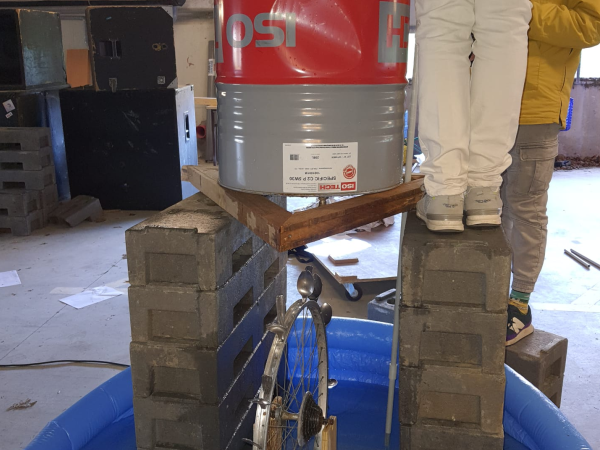
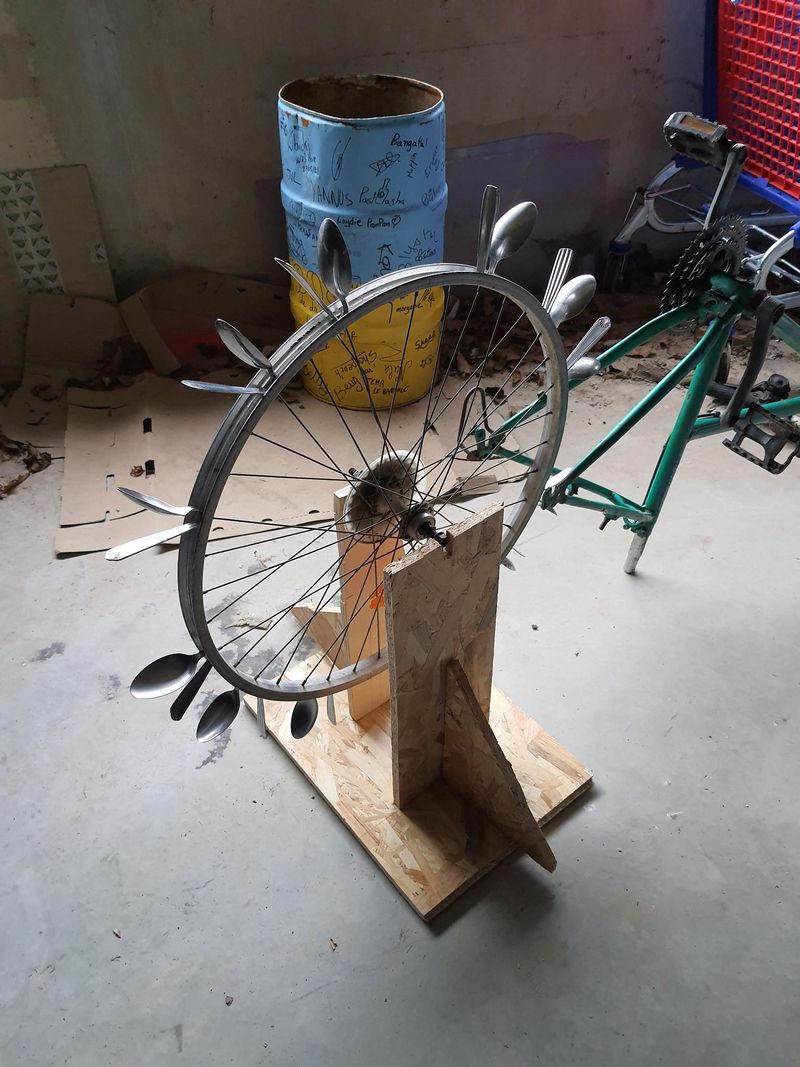
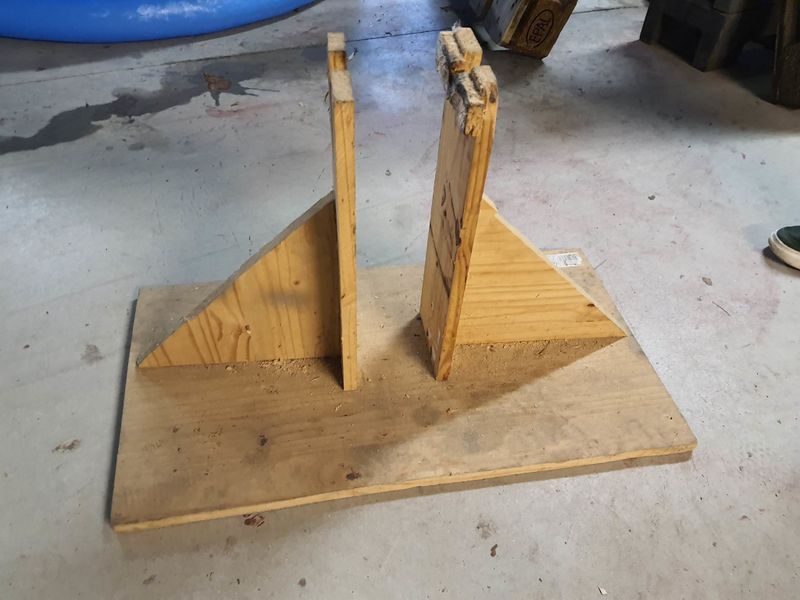
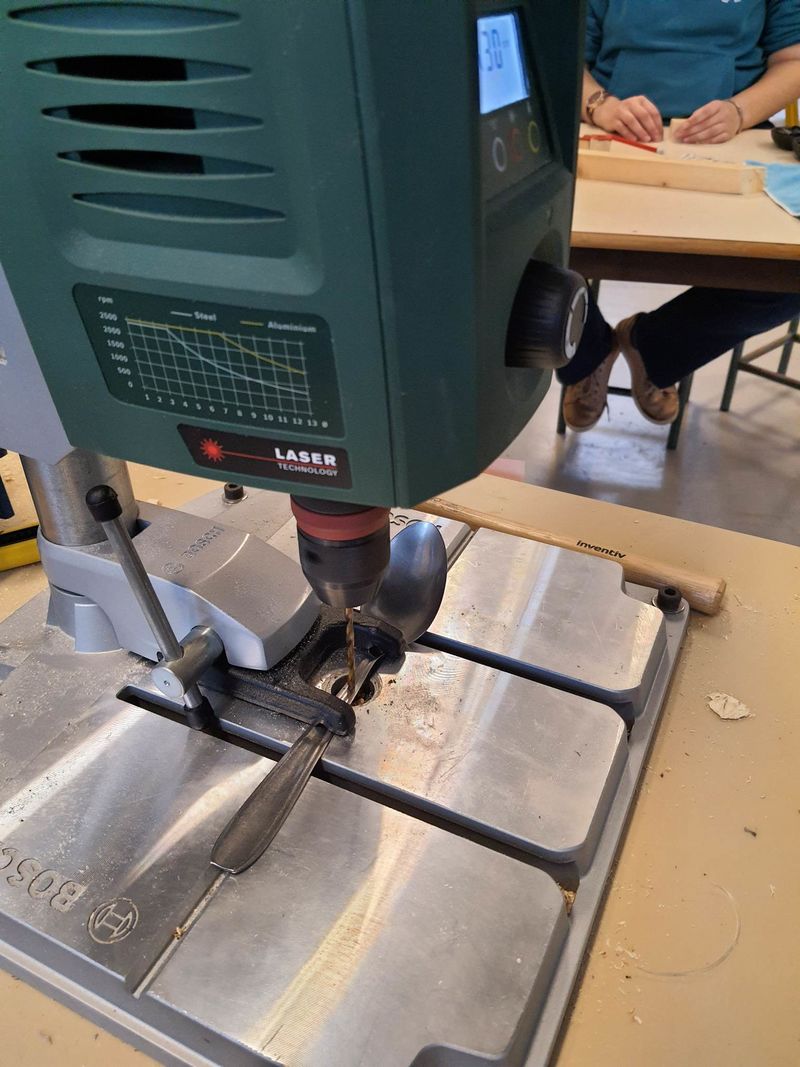
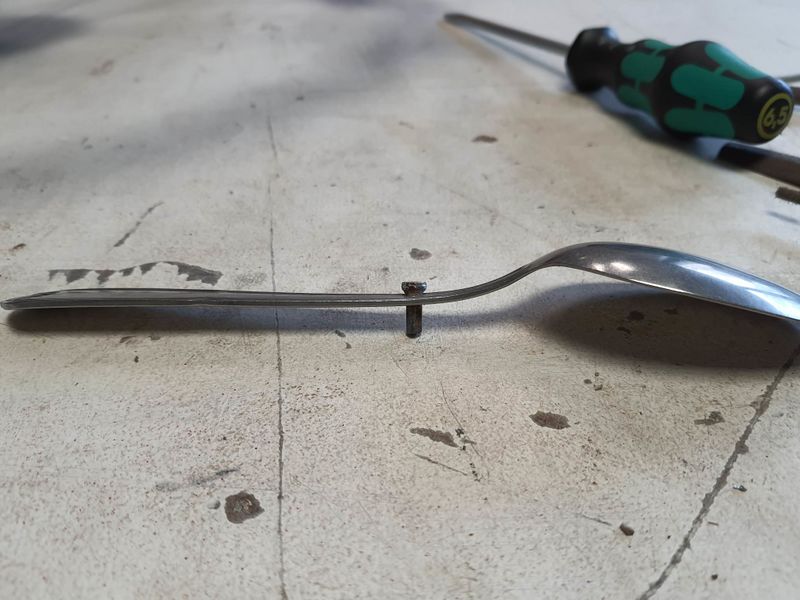
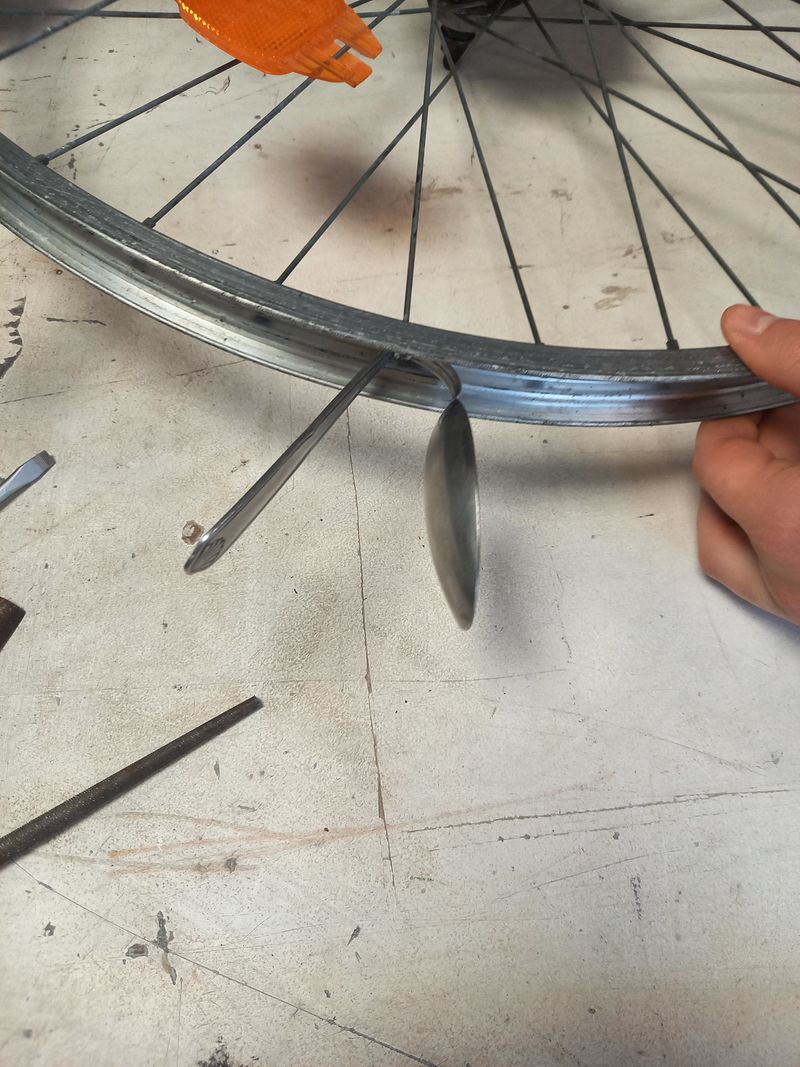
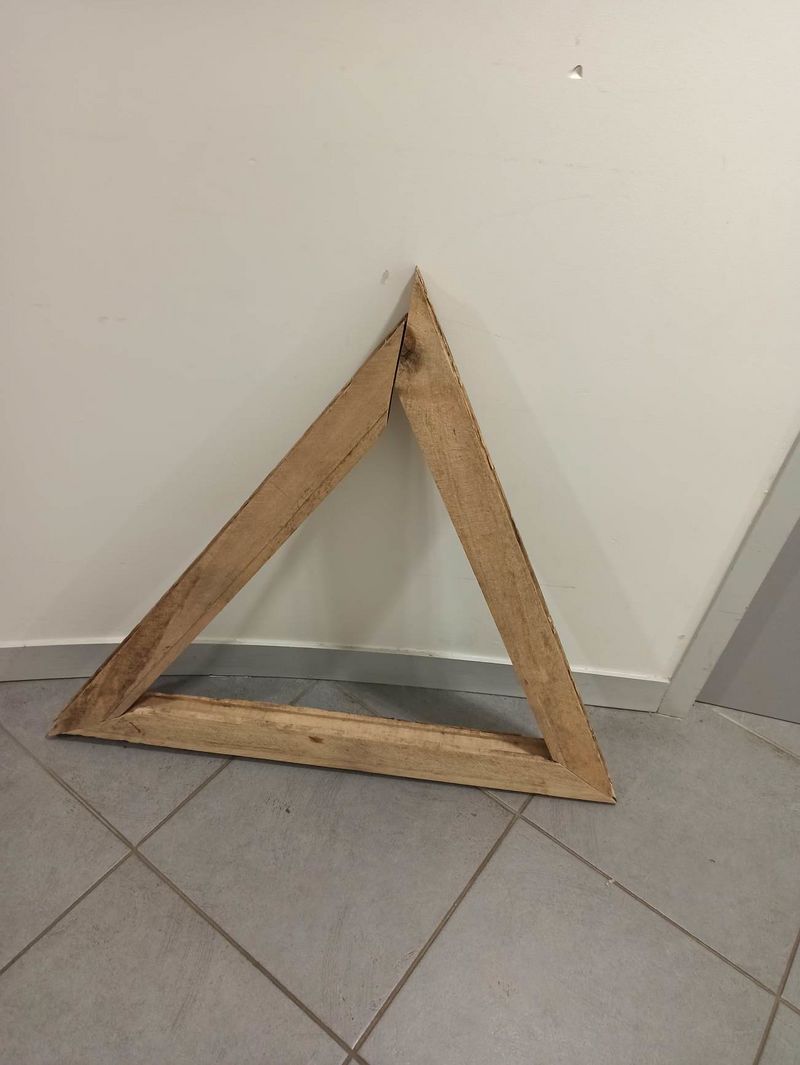
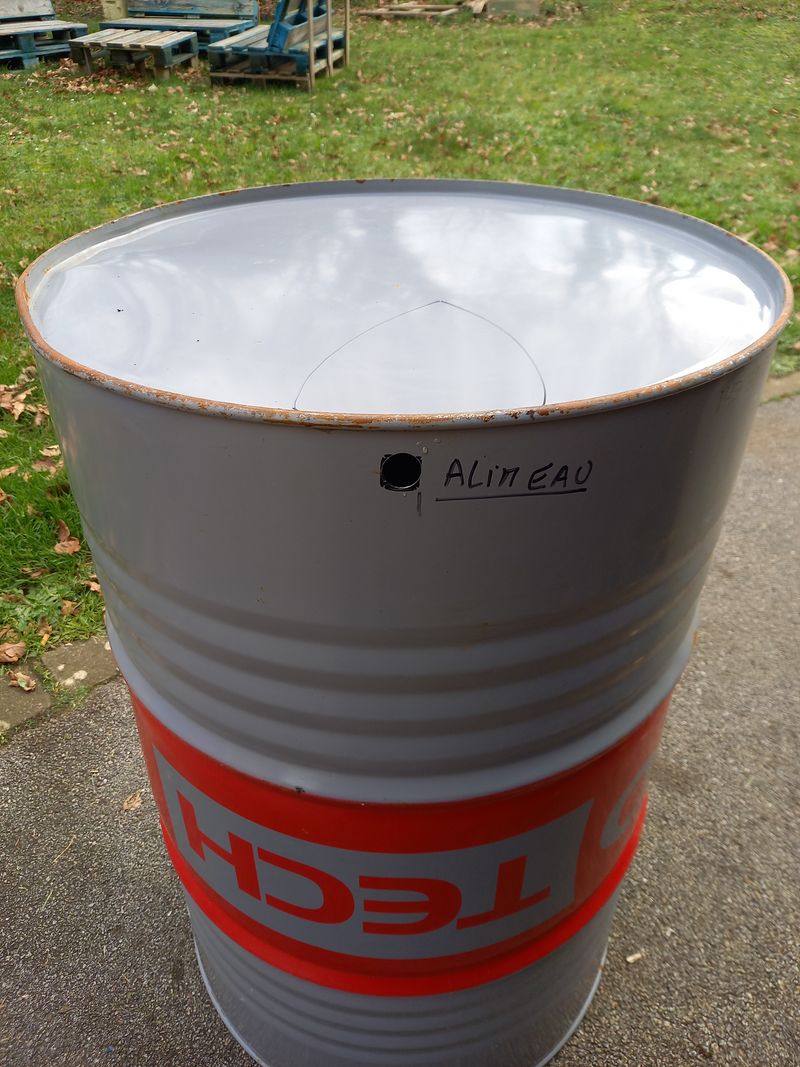
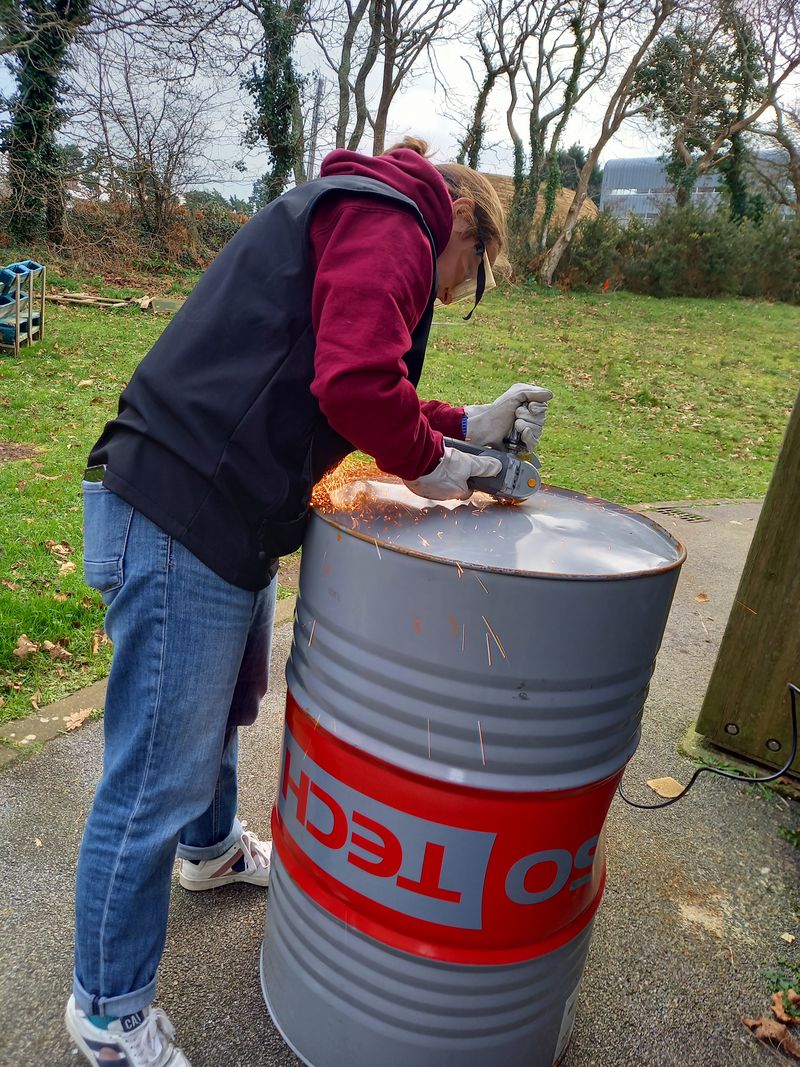
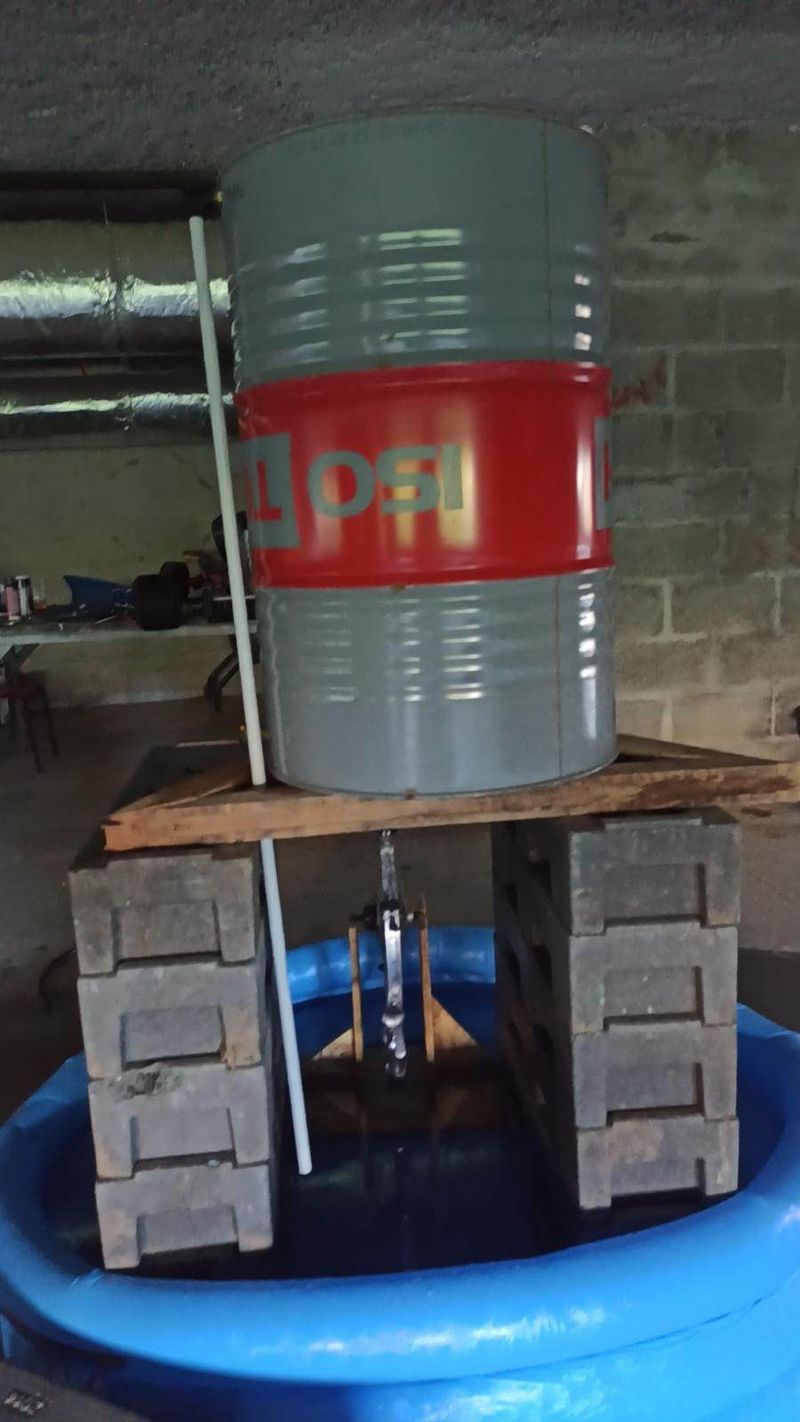
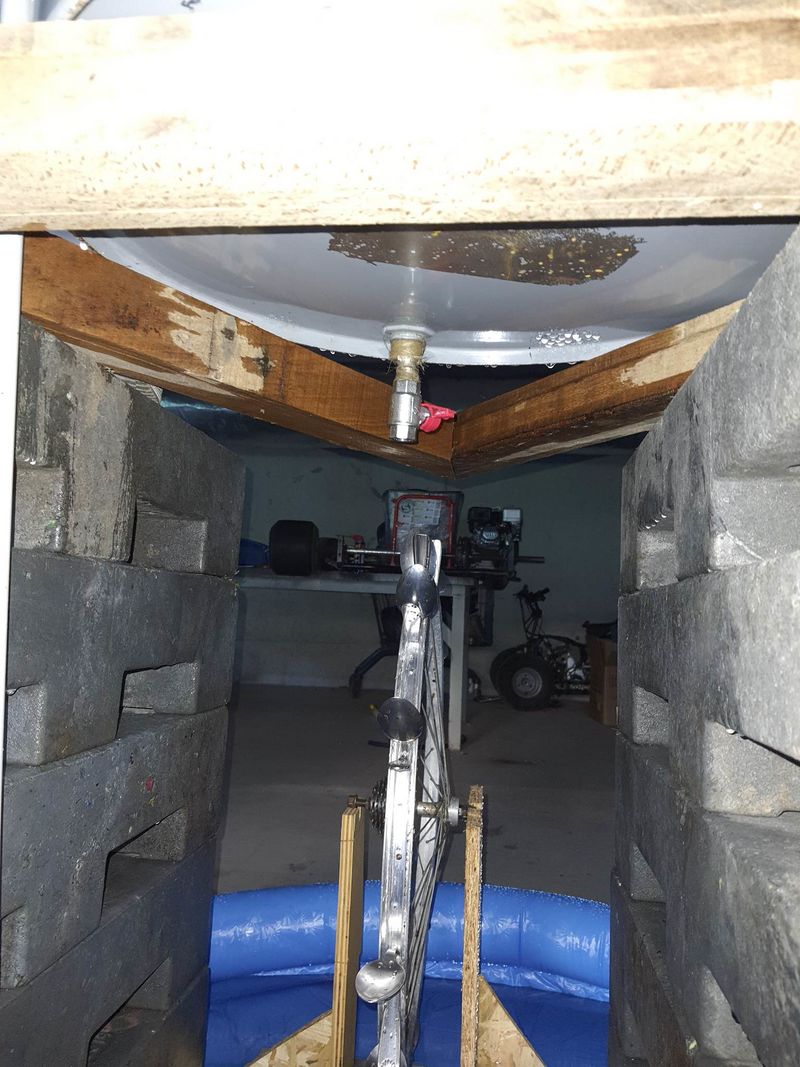
 Français
Français English
English Deutsch
Deutsch Español
Español Italiano
Italiano Português
Português